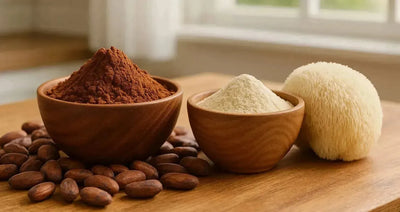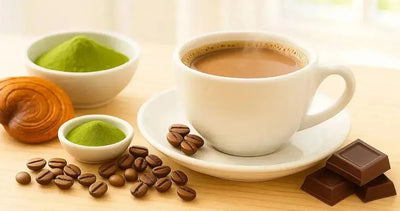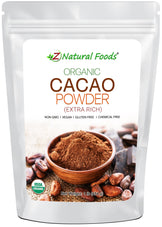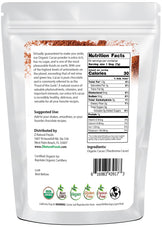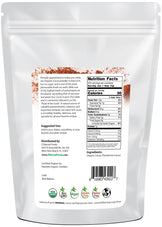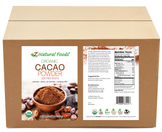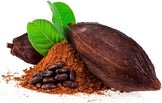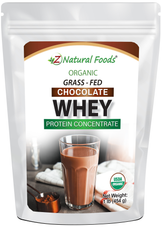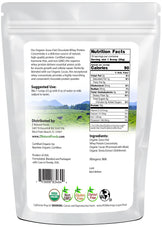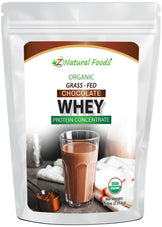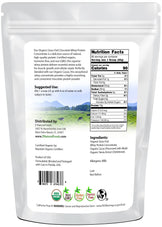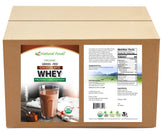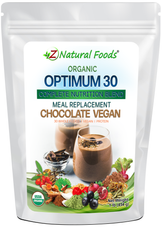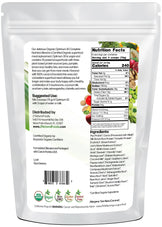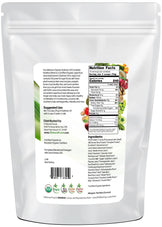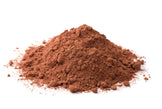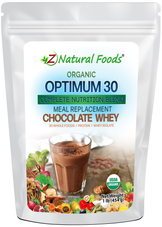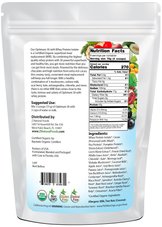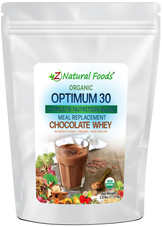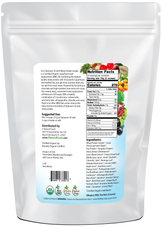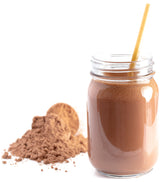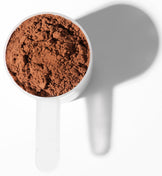Description
Description
You walk into the store and make a b-line down your favorite aisle to purchase what many believe to be the most incredible food on earth.
Not only does it provide a unique selection of rare phytochemicals not found in most foods, but it makes you feel fabulous and has been linked to uplifting your mood. If you ask the average man or woman, they are proud to admit that at one time or another, they have used this fantastic food to nourish their mental and physical wellbeing.
You walk down this magical aisle, and what seems like an endless giant wall filled with delicious and indulgent treats for every fickle pallet with endless varieties, qualities, and flavors to choose from, you might believe you are walking on the clouds in heaven.
Yes, I am talking about cacao.
But, if you have never had the pleasure of eating the actual pure unadulterated food, you may know or refer to it as cocoa or chocolate.
The truth is that the terms cacao, cocoa, and chocolate are interchangeably used and give a false impression that they are all the same.
Would it surprise you to learn that only one food can genuinely be called cacao, and the majority of what you see on that wall is just sweeter indulgent versions created from this authentic food, but, in the end, they are just imposters?
Hang on to your seats because I am about to take you on an extraordinary journey so you can more clearly understand the differences between what tribes, ethnobotanists, and shamans call “The Food of the Gods” and consider to be:
One of the greatest foods on earth; Cacao, and the multitude of varieties produced from this food known as chocolate.
In simple terms, cacao beans are the rawest, most pure, and unadulterated form of what you may know as chocolate.
Dark Chocolate: The transitional food
You may have noticed that many “Dark Chocolate'' bars show a wide variety regarding the percentage of cacao solids it contains. Cacao solids are the components of the cacao bean remaining after the fatty portion (aka butter) has been extracted.
The amounts of cacao solids can range anywhere from 70%-95%. It may surprise you to find out that companies can claim their products as “Dark Chocolate '' with as little as 50% cacao solids in their product because every country has its own standards.
The remaining percentage of all these bars is often sugar used to sweeten and dairy used as an emulsifier. Some exceptions may use stevia or Luo Han Guo as the sweetener and leave more of the cacao butter in the product to fill the gap and give it a more decadent and indulgent flavor and texture.
Much like your morning cup of coffee, the purest form provides the most significant benefits
The more sugar and artificial sweeteners (see our sweeteners here) you add, your body may have to work more to derive the benefits. Whether eaten whole or milled into a powder, the cacao bean has a rich and bitter flavor profile. To the untrained pallet, this may be an acquired flavor and take some time to get used to, so using the percentage-based dark chocolate products may be an excellent way to help your pallet transition into the authentic flavor from cacao. The one thing that seems universally agreed upon is that products with 70% cacao solids should be your start-off point. Pure cacao provides you with the feel-good benefits that have been falsely associated with chocolate products low in cacao solids.
Dutch and Alkalized
You may have seen terms like dutch or alkalized on a product label (you may know this as cocoa) and wondered what that means. They are the same process in which the cacao has been washed in potassium carbonate alkaline solution.
This is done to reduce bitterness and PH levels and to neutralize the acidity, which completely changes the flavor profile of the end product.
- Pure cacao has a pH level of around 5-6 with a sharp, bitter flavor profile.
- Dutch-processed cocoa powder has a pH level of 7 and a smooth, mellow, earthy flavor profile.
This neutralizing process allows the cocoa not to react with baking soda. For these reasons, Dutch-processed cocoa was for a long time the more popular choice for baking. Today people's pallets are changing because they are eating more dark chocolate and eventually becoming lovers of natural pure cacao.
Bittersweet Chocolate
This term describes when the cacao bean's first chocolate liquor is pressed during processing. Bittersweet is essentially a mixture of chocolate liquor, sugar, cacao butter, vanilla, and lecithin (as an emulsifier) and contains no milk or dairy. For clarity purposes, chocolate liquor contains no alcohol. It is produced by grinding the bean down into a liquid form. To be considered bittersweet, it must have a minimum of 70% cacao solids.
Cacao: Food of the Gods
Seen as one of the greatest foods on earth, revered by shamans and ethnobotanists, and used for currency by the Mayans and Aztecs because cacao was believed to be a gift from god, pure cacao is one of nature's most wondrous creations.
Rich in the flavanols epicatechin and catechin, with procyanidins providing the majority of antioxidant activity. The experience of eating a nourishing form of cacao can be attributed to the synergy of unique compounds in this food.
1. Caffeine: The great stimulant
First is the infamous alkaloid caffeine. For a good reason, it is safe to say that caffeine is the world's most widely used stimulating agent. It is well-known that caffeine stimulates the central nervous system. And according to studies, it may also stimulate blood flow in the brain (8) (9) and increase the secretion of serotonin (8). Around 300 milligrams (mg) a day of caffeine has been shown to be a beneficial dose for most adults, with a 50-gram serving of cacao packing about 35 mg of caffeine.
2. Theobromine: The powerful Antioxidant
Theobromine, also known as caffeine’s cousin, is primarily found in cacao and tea. In one 50-gram serving of cacao, you might discover about 250 mg of theobromine. Featured in Frontiers in Pharmacology, researchers found that this fantastic compound offers remarkable antioxidant properties and may be a key player in some future treatments (10).
3. Phenylethylamine (PEA): The feel-good chemical
Phenylethylamine (PEA) is the actual love compound found in cacao. While PEA is in cacao only in small amounts, it carries a significant effect. Via stimulation of the nervous system, PEA triggers the release of endorphins and potentiates the activity of dopamine associated with sexual arousal and pleasure (11,12). So, in other words, that restless feeling you have when you are in love is primarily due to PEA.
4. Resveratrol: The healthy aging compound
It is fair to say that resveratrol is one of the most well-studied compounds when discussing how to support a healthy aging process. On average, just under 200 mcg of resveratrol is present in cacao powder per 100 grams which is half as much as you will find in California red wine. While that is a minimal amount, a little bit goes a long way.
Here are a few more reasons to throw out that cheap chocolate and eat some cacao…
Untreated, raw, organic cacao has been used for centuries as a wonderfully nourishing food.
This food is precisely what Hippocrates had in mind when he said,
“Let food be thy medicine.”
A Healthy Heart
Cacao may nourish many aspects of a healthy heart. And the research is quickly piling up. According to a Japanese study, the polyphenolic compounds (a class of antioxidants) found in cacao show great promise in possibly suppressing inflammation levels in the cardiovascular system (1). Another study showed that consumption of cacao flavanols positively impacted cardiometabolic function -- affecting the heart and metabolic conditions like diabetes (2).
The ultimate feel-good brain-food
Cacao seems to have even more happy effects. A study conducted by researchers at the University of Reading showed the positive effects of cacao on the pressure of blood flow to the brain (3), while Italian researchers recently showed how cacao might have positive neuroprotective effects (4). Even more, research showed that cacao positively impacts mood and cognitive enhancement (5).
What does all of this mean?
In a nutshell, there is a vast difference between eating chocolate regardless of its variety and pure cacao, which provides the body, mind, and soul with impactful nourishment.
But, don’t be so quick to throw out your high percentage cacao solid rich dark chocolate products as these are excellent tools to help you transition to the pearly of pure, rich, decadent cacao heavens.

Dark Chocolate Biscotti Recipe (with Organic Cacao):
Ingredients:
- 1 cup Organic Bittersweet Chocolate Chips
- 1/4 cup and 2 tbsp Organic Cacao Powder
- 1/4 cup Chopped Almonds (or any nuts of your choice)
- 2 cup Butter Powder
- 3/4 cup Sugar
- 2 cup All Purpose Flour
- 2 Large Eggs
- 2 tsp Vanilla Extract
- 1 tsp Baking Soda
- 1/4 cup Water
Directions:
- Preheat oven to 350 degree F and line a baking tray with parchment paper.
- Combine dry ingredients (flour, cacao powder, baking soda), sift and set a side.
- In an electric mixing bowl, add butter powder and water, and mix well until smooth.
- On medium speed, add sugar and mix for 3 to 5 minutes.
- Add vanilla extract and mix for 10 seconds.
- Add one egg and mix for 10 seconds. Repeat for a second egg.
- Add sifted flour mixture and mix until dough comes together for 1 to 2 minutes.
- Add chocolate chips and almonds, and mix until chips and nuts are mixed evenly for 15 to 20 seconds.
- Scrape the dough onto a floured work surface, dust the dough with flour, gently shape into a ball and cut the dough in half.
- Roll each piece of dough into a log shape about 2 inch wide with 3/4 inch high.
- Transfer the logs to a parchment-lined baking tray and bake for about 15 to 20 minutes.
- Let them cool down for 5 minutes, then slice the logs about 3/4 inch wide and arrange the biscotti, cut side up on baking tray.
- Bake the biscotti a second time for about 10 minutes until crisp. Let the biscotti cool down on cooling rack, then serve with coffee, tea or milk.
References
- Zempo H, Suzuki J, Watanabe R, Wakayama K, Kumagai H, Ikeda Y, Akazawa H, Komuro I, Isobe M. 2016. “Cacao polyphenols ameliorate autoimmune myocarditis in mice.” Pubmed.gov Accessed January 31, 2018, https://www.ncbi.nlm.nih.gov/pubmed/26657007
- Davison K, Howe PR. 2015. “Potential implications for dose and diet for the effects of cocoa flavanols on cardiometabolic function.” Pubmed.gov Accessed January 31, 2018, https://www.ncbi.nlm.nih.gov/pubmed/26111215
- Lamport DJ, Pal D, Moutsiana C, Field DT, Williams CM, Spencer JP, Butler LT. 2015. “The effects of flavanol-rich cocoa on cerebral perfusion in healthy older adults in a conscious resting state.” Pubmed.gov Accessed January 31, 2018, https://www.ncbi.nlm.nih.gov/pubmed/26047963
- Cimini A1, Gentile R, D'Angelo B, Benedetti E, Cristiano L, Avantaggiati ML, Giordano A, Ferri C, Desideri G. 2013. “Cocoa powder triggers neuroprotective and preventive effects in a human Alzheimer's disease model by modulating BDNF signaling pathway.” Pubmed.gov Accessed January 31, 2018, https://www.ncbi.nlm.nih.gov/pubmed/23554028
- Scholey A, Owen L. 2013. “Effects of chocolate on cognitive function and mood: A systematic review.” Pubmed.gov. Accessed Jan 31, 2018, https://www.ncbi.nlm.nih.gov/pubmed/24117885
- Lee KW1, Kim YJ, Lee HJ, Lee CY. 2003 “Cocoa has more phenolic phytochemicals and a higher antioxidant capacity than teas and red wine.” Pubmed.gov. Accessed January 31, 2018, https://www.ncbi.nlm.nih.gov/pubmed/14640573?dopt=Citation
- Cinquanta L1, Di Cesare C2, Manoni R3, Piano A4, Roberti P4, Salvatori G2. 2016. “Mineral essential elements for nutrition in different chocolate products.” Pubmed.gov. Accessed January 31, 2018, https://www.ncbi.nlm.nih.gov/pubmed/27346251
- Simone Cappelletti,1 Piacentino Daria,2 Gabriele Sani,2 and Mariarosaria Aromatario 1,. 2015. “Caffeine: Cognitive and Physical Performance Enhancer or Psychoactive Drug?” Pubmed.gov. Accessed January 31, 2018, https://www.ncbi.nlm.nih.gov/pmc/articles/PMC4462044/
- Merideth A. Addicott, a Lucie L. Yang, Ann M. Peiffer, Luke R. Burnett, a Jonathan H. Burdette, a Michael Y. Chen, Satoru Hayasaka,c, a Robert A. Kraft,b Joseph A. Maldjian, a and Paul J. Laurientia 2009. “The Effect of Daily Caffeine Use on Cerebral Blood Flow: How Much Caffeine Can We Tolerate?” Pubmed.gov. Accessed January 31, 2018. https://www.ncbi.nlm.nih.gov/pmc/articles/PMC2748160/
- Eva Martínez-Pinilla,1,* Ainhoa Oñatibia-Astibia,2 and Rafael Franco 3, 2015. “The relevance of theobromine for the beneficial effects of cocoa consumption.” Pubmed.gov. Accessed January 31, 2018, https://www.ncbi.nlm.nih.gov/pmc/articles/PMC4335269/
- Sabelli H1, Fink P, Fawcett J, Tom C. 1996 “Sustained antidepressant effect of PEA replacement.” Pubmed.gov. Accessed January 31, 2018, https://www.ncbi.nlm.nih.gov/pubmed/9081552
- Ash M. 2010 “PEA- a natural antidepressant” https://www.clinicaleducation.org/resources/reviews/pea-a-natural-antidepressant

